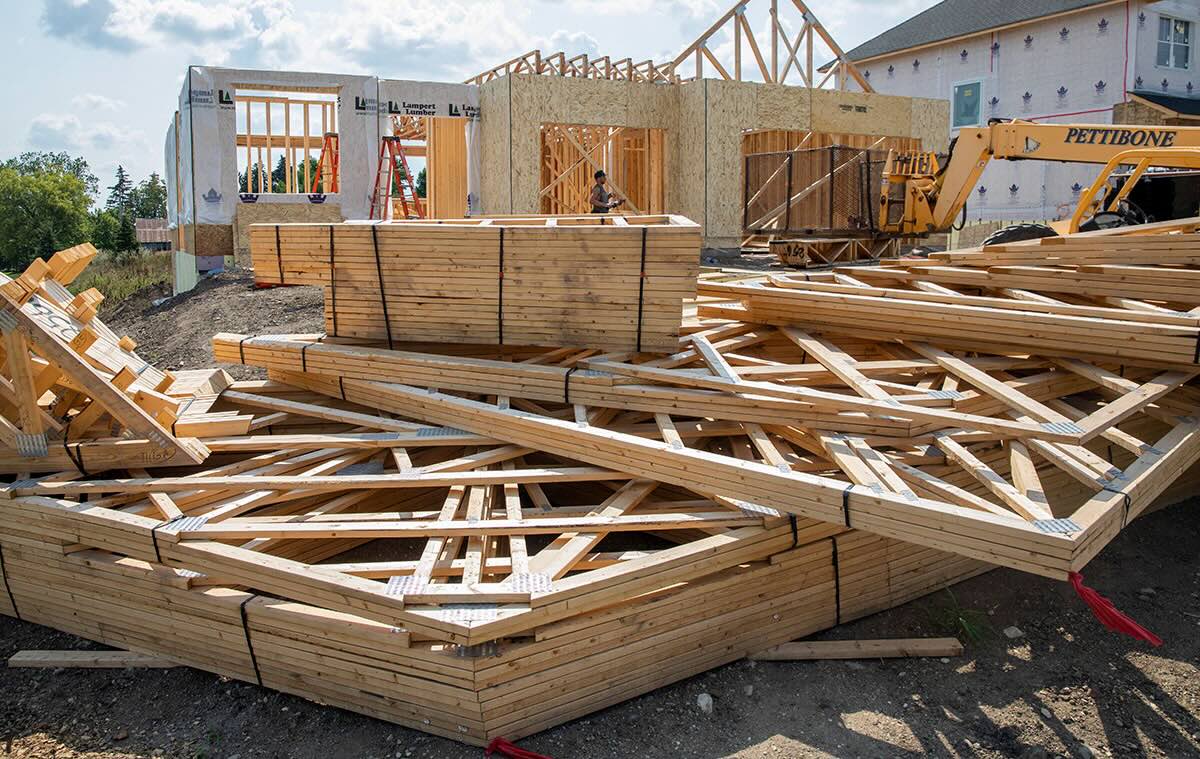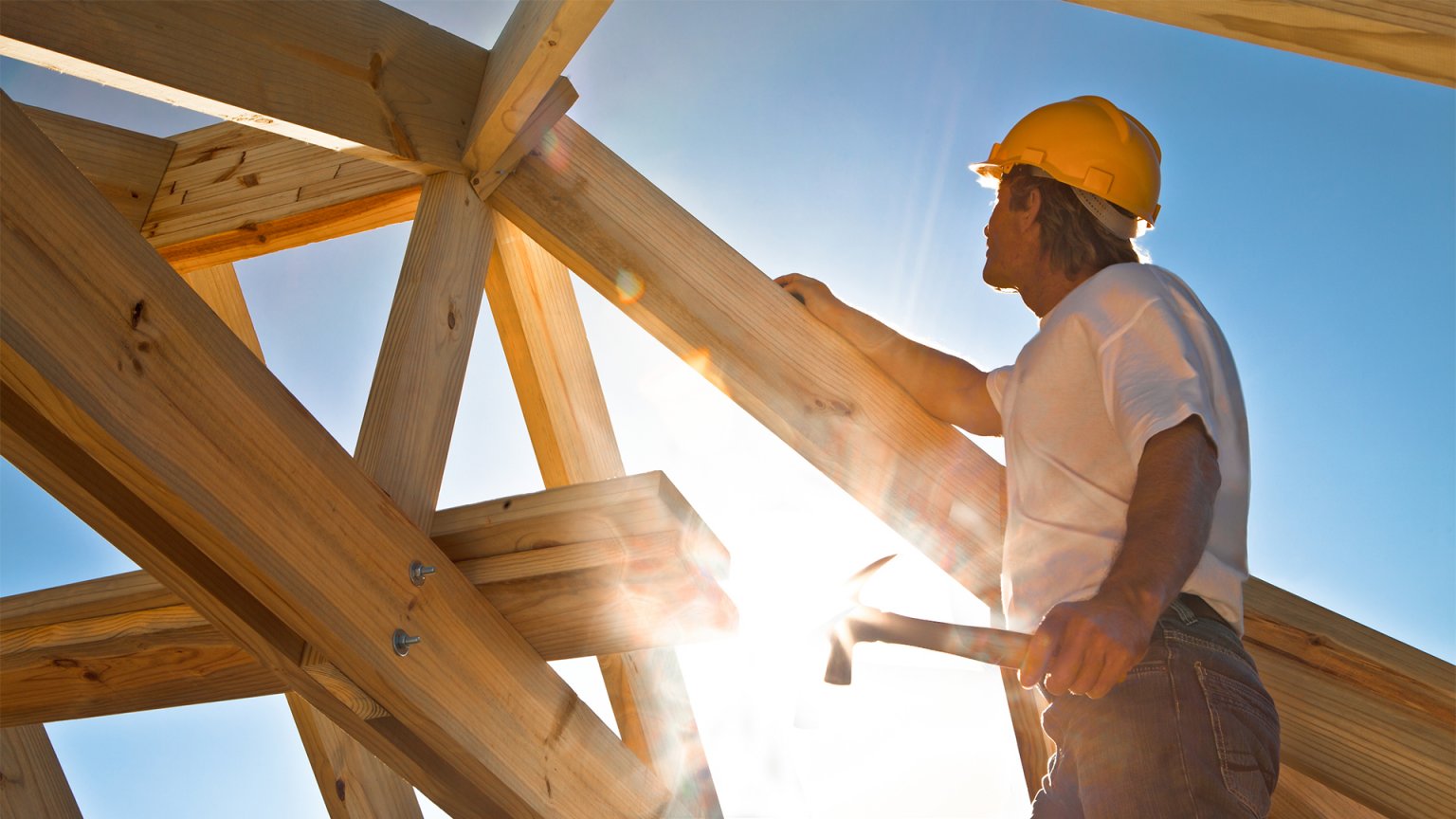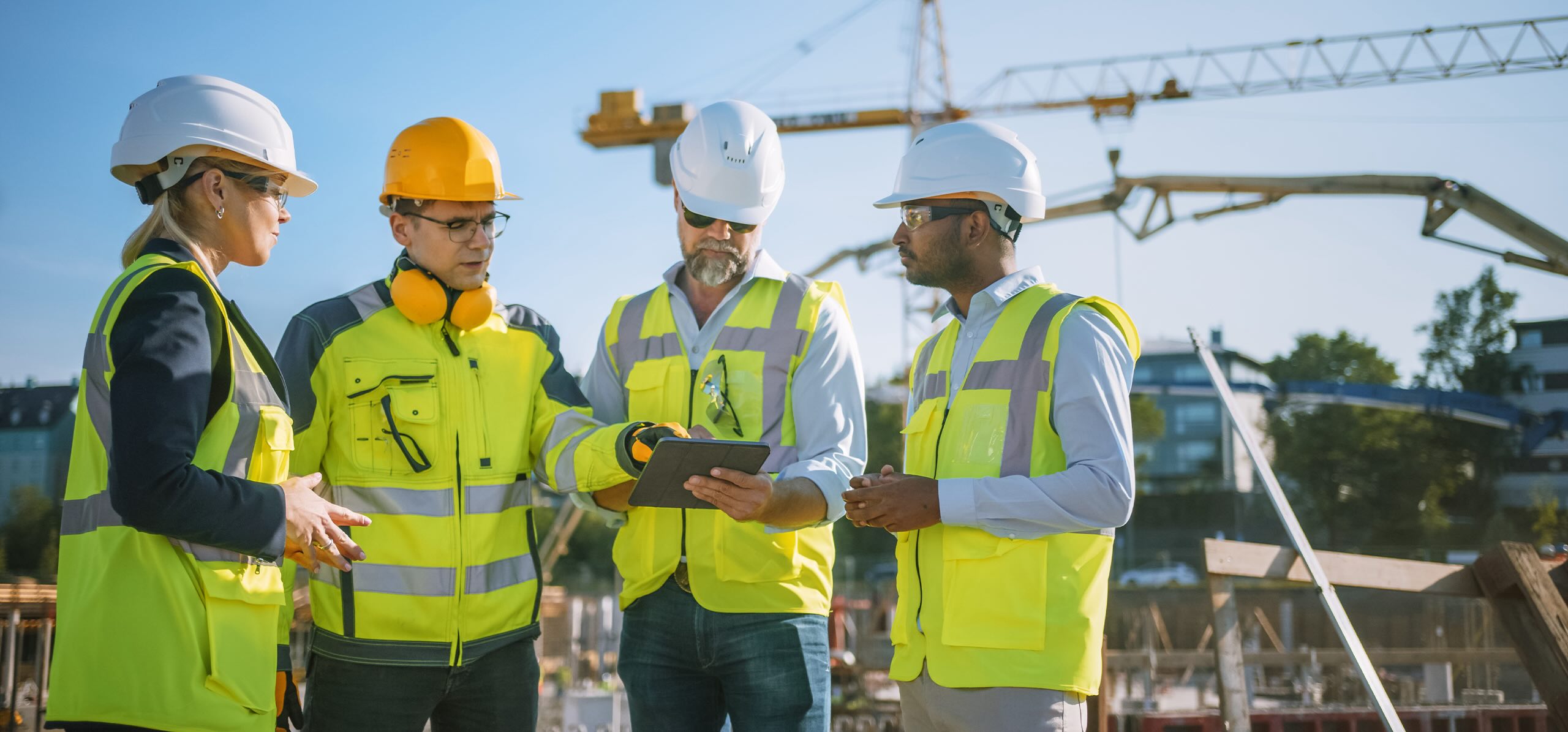Home>diy>Building & Construction>What Type Of Level Is The Most Commonly Used Level In The Construction Industry?


Building & Construction
What Type Of Level Is The Most Commonly Used Level In The Construction Industry?
Modified: August 27, 2024
Find out the most commonly used level in the building construction industry and discover which type is widely preferred for accurate leveling.
(Many of the links in this article redirect to a specific reviewed product. Your purchase of these products through affiliate links helps to generate commission for Storables.com, at no extra cost. Learn more)
Introduction
Welcome to the world of construction, where precision and accuracy are the keys to building structures that stand tall and withstand the test of time. In this industry, a crucial tool that professionals rely on to ensure their projects are executed flawlessly is the humble level. Whether it’s constructing a skyscraper or laying the foundation for a residential home, the use of a level is fundamental in achieving alignment and balance.
Levels have been used in construction for centuries, evolving from simple devices to more advanced and precise instruments. As technology continues to advance, the construction industry has seen a variety of levels that cater to specific needs and requirements. However, among the plethora of options available, there is one type of level that stands out as the most commonly used in the construction industry.
In this article, we will explore the importance of levels in construction, the different types of levels available, factors to consider when choosing a level, and ultimately unveil the most commonly used level in the construction industry. So, whether you’re a seasoned construction professional or just starting out in the industry, join us on this journey to discover the essential tool that keeps construction projects on the right track.
Key Takeaways:
- The traditional spirit level remains the most commonly used tool in construction due to its simplicity, reliability, durability, versatility, and cost-effectiveness, making it a staple for professionals of all skill levels.
- While advanced levels offer precision, the traditional spirit level’s ease of use, independence from power, and compatibility with other tools make it a trusted and practical choice for construction projects worldwide.
The Importance of Levels in the Construction Industry
In the world of construction, precision is paramount. Every structure, from buildings to bridges, needs to be perfectly aligned and level to ensure its stability and integrity. This is where levels come into play. A level is a tool used to determine if a surface is perfectly horizontal or vertical. It helps construction professionals achieve accurate measurements, alignments, and angles, ensuring that every component of a project is in the right position.
One of the key reasons why levels are so crucial in the construction industry is that they promote safety. A properly leveled structure is less likely to experience structural issues or pose safety hazards. For example, in a building, an uneven floor could create tripping hazards, while a misaligned wall could impact the overall stability of the structure. By using levels, construction professionals can identify and correct any deviations before they become major issues.
Levels also play a significant role in achieving aesthetic appeal in construction projects. Imagine a room with crooked walls or a tilted picture frame on a wall. These imperfections can drastically affect the overall visual appeal and may give the impression of poor craftsmanship. Using levels helps ensure that walls are straight, floors are even, and surfaces are aligned, creating a visually pleasing end result.
Furthermore, levels are indispensable when it comes to accurately installing fixtures and fittings. Whether it’s plumbing, electrical work, or cabinetry, precise measurements and alignments are necessary for successful installations. A level allows construction professionals to ensure that pipes are properly aligned, electrical outlets are at the correct height, and cabinets are level and square.
Not only do levels assist with individual elements of a project, but they also contribute to the overall structural integrity of the entire construction. When levels are used during the initial stages of a project, such as laying foundations or setting the framework, it helps ensure that all subsequent elements will align correctly. This prevents issues such as warped walls or uneven flooring, which can be costly and time-consuming to rectify.
To summarize, levels are indispensable tools in the construction industry. They not only promote safety and aesthetic appeal but also contribute to accuracy, precise installations, and long-term stability of a construction project. From small-scale residential projects to massive commercial ventures, every construction professional understands the importance of using levels to achieve excellence in their craft.
Types of Levels Used in Construction
In the construction industry, various types of levels are used to meet specific requirements and achieve different levels of accuracy. Each type of level serves a specific purpose and offers unique features that cater to specific construction tasks. Let’s explore some of the most commonly used types of levels:
- Traditional Spirit Levels: These are the most basic and widely recognized levels. They consist of a long rectangular body filled with liquid and an attached bubble or spirit vial. As the bubble moves along the vial, it indicates if a surface is level or plumb.
- Laser Levels: Laser levels use advanced technology to project a laser beam or line onto a surface, providing a highly accurate level reference. These levels are ideal for large-scale projects where precision is crucial. Laser levels can project horizontal, vertical, and even sloped lines, making them versatile tools.
- Digital Levels: Digital levels, also known as electronic levels, utilize electronic sensors to measure angles and levels. They provide precise digital readings and often offer additional features such as memory storage and data recording. Digital levels are commonly used in applications that require high accuracy, such as surveying and specialized construction projects.
- Torpedo Levels: Torpedo levels are compact and portable levels that feature a smaller profile and a V-shaped groove, allowing them to be used on rounded surfaces such as pipes and conduits. These levels usually have multiple vials, enabling measurements for different angles and slopes.
- Box Levels: Box levels, also known as I-beam levels, are sturdy and durable levels with a robust I-shaped cross-section. They are designed to withstand rough usage and are commonly used in heavy-duty construction tasks. Box levels have multiple vials for measuring levels, plumb, and sometimes, slope.
- Line Levels: Line levels are compact levels that are specifically designed for leveling and aligning strings or lines. They consist of a small body with a hook on one end where a line can be attached. Line levels are commonly used in tasks like installing suspended ceilings, aligning fences, and laying out landscaping projects.
- Water Levels: Water levels are simple and cost-effective tools that utilize the principle of fluid equilibrium to measure levels. They consist of a clear tube filled with water or liquid and are typically used for large-scale leveling, such as establishing a level reference across wide distances or during site grading.
These are just a few examples of the types of levels used in the construction industry. It’s important to consider the specific requirements of a project and the desired level of accuracy before selecting the appropriate type of level. By choosing the right level for each task, construction professionals can ensure precise measurements and achieve the desired results.
Factors to Consider When Choosing a Level
When it comes to choosing a level for a construction project, there are several factors to consider to ensure that you have the right tool for the job. Here are some key factors to keep in mind:
- Type of Construction Project: Consider the nature and scale of the construction project. Is it a small residential project or a large commercial venture? The type of project will determine the level of accuracy and precision required.
- Accuracy: Evaluate the level’s accuracy. This is especially important for projects where precision is crucial, such as aligning walls or installing fixtures. Different types of levels offer varying degrees of accuracy, so choose one that meets your specific needs.
- Portability: Assess the level’s portability. If you need to move around the construction site frequently or work in tight spaces, a compact and lightweight level may be more practical.
- Durability: Consider the level’s durability, particularly if it will be used in demanding or rugged environments. Construction sites can be harsh, so opt for a level that can withstand accidental drops or rough handling.
- Additional Features: Determine whether you require any additional features or functionalities. Some levels come with built-in rulers, magnetic bases, or digital displays for enhanced convenience and versatility.
- Budget: Consider your budget for the level. While quality should always be a priority, it’s important to find a level that fits your budget without compromising on essential features or durability.
- User-Friendly: Evaluate how user-friendly the level is. Look for features like easy-to-read vials, comfortable grips, and intuitive controls that will make your work more efficient and less stressful.
- Brand and Quality: Consider the reputation of the brand and the overall quality of the level. Investing in a reliable and reputable brand will ensure that you get a level that is built to last and performs consistently.
By taking these factors into account, you can make an informed decision and choose the most suitable level for your construction project. Remember, the right level can greatly contribute to the accuracy and efficiency of your work, resulting in better-quality construction and client satisfaction.
The most commonly used level in the construction industry is the spirit level, also known as a bubble level. It is essential for ensuring horizontal and vertical accuracy in building and carpentry projects.
The Most Commonly Used Level in the Construction Industry
Among the various types of levels available in the construction industry, the traditional spirit level remains the most commonly used and trusted tool by construction professionals. Also known as a bubble level or a carpenter’s level, the spirit level has stood the test of time and continues to be a staple in every construction toolbox.
The simplicity and reliability of the traditional spirit level make it an essential tool for a wide range of construction tasks. It consists of a long rectangular body filled with liquid and an attached bubble or spirit vial. When the bubble is centered between the two parallel lines on the vial, it indicates that the surface is perfectly level or plumb.
So why is the traditional spirit level preferred over other advanced options? There are a few reasons that contribute to its popularity:
- Simplicity: The traditional spirit level is simple to understand and use. The concept of the bubble indicating level or plumb is easy to grasp, making it suitable for both experienced professionals and beginners in the construction industry.
- Accuracy: While laser and digital levels offer higher levels of precision, the traditional spirit level provides sufficient accuracy for most construction tasks. It is highly reliable in achieving level alignments and ensuring the accuracy of vertical and horizontal surfaces.
- Durability: Spirit levels are renowned for their durability and ability to withstand rough handling and harsh construction site conditions. They are built to last and can withstand accidental drops and exposure to dust and debris.
- Versatility: Spirit levels are versatile tools that can be used in various construction applications. From leveling walls and floors to checking the verticality of structures, the traditional spirit level is a go-to tool for a wide range of leveling and alignment jobs.
- Cost-Effective: Compared to more advanced level options, the traditional spirit level is relatively affordable. It offers excellent value for the price, making it accessible to both professionals and DIY enthusiasts.
Despite the emergence of advanced technologies in the construction industry, the traditional spirit level remains a trusted and indispensable tool. Its simplicity, accuracy, durability, versatility, and cost-effectiveness make it the most commonly used level by construction professionals around the world.
It’s important to note that while the traditional spirit level is commonly used, different construction tasks may require the use of more specialized levels to achieve the desired accuracy and precision. Construction professionals should evaluate the specific requirements of their projects and choose the appropriate level accordingly.
Read more: What Type Of Industry Is Construction
Advantages of Using the Most Commonly Used Level
The traditional spirit level, being the most commonly used level in the construction industry, offers several advantages that make it a reliable and preferred tool for construction professionals. Let’s explore some of the key advantages of using the traditional spirit level:
- Easy to Use: One of the primary advantages of the traditional spirit level is its simplicity. It does not require any complex calibration or technical knowledge to operate. Construction professionals of all skill levels can pick up a spirit level and quickly understand how to achieve accurate level and plumb alignments.
- Reliability: Spirit levels have a proven track record of reliability. The bubble inside the vial offers a clear visual indication of whether a surface is level or plumb. This simplicity ensures trustworthy and consistent results, allowing construction professionals to have confidence in their measurements.
- Durability: Traditional spirit levels are built to withstand rugged construction site conditions. Their robust construction and the use of durable materials ensure that they can endure accidental drops, exposure to harsh environments, and everyday wear and tear.
- Wide Range of Applications: The traditional spirit level can be used for a wide variety of construction tasks. From leveling floors and installing cabinets to aligning walls and checking the plumb of vertical structures, the spirit level is a versatile tool that can handle various leveling and alignment jobs on the construction site.
- Cost-Effective: Compared to more advanced levels like laser or digital levels, the traditional spirit level is generally more affordable. It offers excellent value for its price, making it accessible to construction professionals of all budgets.
- Independence from Power: Traditional spirit levels do not rely on power sources or batteries. This ensures that construction professionals can use them in any environment, even in remote locations or during power outages, without concerns about running out of battery or finding a power source.
- User-Friendly: Spirit levels are designed with user convenience in mind. They often come with ergonomic handles or grips, making them comfortable to hold and use for extended periods. Additionally, their clear vial markings and straightforward operation make them user-friendly even for those who are new to the construction industry.
- Compatibility with Other Tools: Traditional spirit levels can easily be used in conjunction with other construction tools and equipment. They seamlessly integrate with measurement tapes, rulers, and marking tools to ensure accurate measurements and alignments throughout the construction process.
The advantages of using the traditional spirit level make it a go-to tool for construction professionals worldwide. Its ease of use, reliability, durability, versatility, cost-effectiveness, and compatibility with other tools contribute to its popularity and wide-ranging applications in the construction industry.
While more advanced levels offer enhanced features and precision, the traditional spirit level continues to hold its own as a trusted and dependable tool that has stood the test of time.
Conclusion
Levels play a crucial role in the construction industry, ensuring that structures are accurately aligned and leveled. Among the various types of levels available, the traditional spirit level has consistently remained the most commonly used tool by construction professionals.
The traditional spirit level offers several advantages that make it a reliable and practical choice for construction projects. Its simplicity, reliability, durability, versatility, cost-effectiveness, and compatibility with other tools contribute to its widespread use and popularity.
Although more advanced levels with laser or digital technology provide higher levels of precision, the traditional spirit level continues to be valued for its ease of use, reliability, and wide range of applications. Its proven track record and familiarity in the industry give construction professionals confidence in their measurements and ensure consistent results on the job site.
Choosing the right level for a construction project involves consideration of factors such as accuracy requirements, portability, durability, additional features, budget, user-friendliness, and brand reputation. However, regardless of the specific type of level chosen, achieving accurate leveling and alignment is essential for the safety, structural integrity, and visual appeal of any construction project.
As technology continues to advance, we may see new types of levels emerge in the construction industry. However, the traditional spirit level’s simplicity, reliability, and cost-effectiveness will likely continue to make it an indispensable tool in the toolkit of construction professionals around the world.
So, whether you’re building a skyscraper or remodeling a home, remember the importance of using a level to ensure the accuracy and precision necessary for a successful construction project.
Frequently Asked Questions about What Type Of Level Is The Most Commonly Used Level In The Construction Industry?
Was this page helpful?
At Storables.com, we guarantee accurate and reliable information. Our content, validated by Expert Board Contributors, is crafted following stringent Editorial Policies. We're committed to providing you with well-researched, expert-backed insights for all your informational needs.















0 thoughts on “What Type Of Level Is The Most Commonly Used Level In The Construction Industry?”